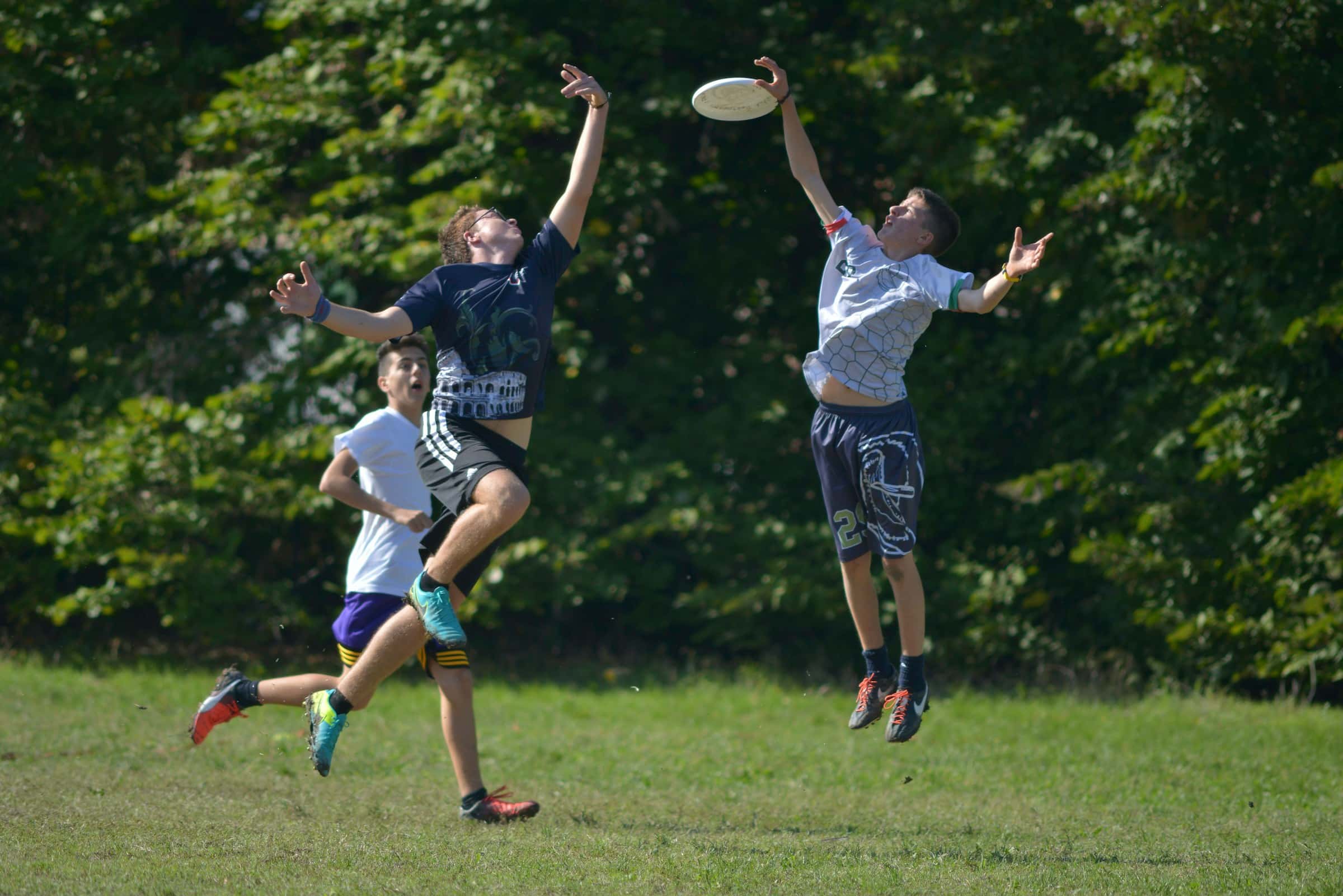How can ultimate frisbee players develop rapid acceleration for better on-field maneuverability?

In the dynamic world of Ultimate Frisbee, the ability to rapidly accelerate and shift direction can dramatically enhance a player's on-field performance. Unlike many conventional sports, Ultimate Frisbee is unique in its requirements for both endurance and explosive power. Players must quickly pivot, change direction, and accelerate to maintain possession, win the disc, or dodge opponents. This article will explore how players can increase their acceleration and the potential effects of these adaptations on game strategy and overall team performance. We will delve into the biomechanics of acceleration, the importance of optimal cutting angles, and the potential impacts on knee forces and ACL health.
The Science Behind Rapid Acceleration
Acceleration, in the context of sports performance, is the rate at which a player can increase their velocity. It is crucially important in games like Ultimate Frisbee where quick changes in speed and direction are central to the gameplay. According to data gathered from several research studies, the key factors affecting acceleration include the force applied in the opposite direction of motion and the angle at which this force is applied.
A voir aussi : What are the advanced techniques for maintaining grip control in professional arm wrestling?
Moreover, observational studies on Ultimate Frisbee players have shown higher accelerations during sprinting, cutting, and pivoting movements compared to other sports. This is likely due to the unique nature of the game where players are required to quickly move in different directions to catch the frisbee or to dodge defenders.
The Role of Cutting Angles
One of the most frequently observed maneuvers in Ultimate Frisbee is the "cut". Cutting refers to a change in direction or velocity to evade an opponent. The angle at which a player "cuts," or changes direction, can significantly influence their acceleration. A sharper cut angle, closer to 90 degrees, results in a rapid deceleration followed by acceleration in a new direction. However, this can apply significant force to the knee joint and potentially increase the risk of injury to the Anterior Cruciate Ligament (ACL).
Cela peut vous intéresser : What is the optimal sprinting posture for maximum velocity in track and field?
On the other hand, cutting at a lesser angle, closer to 45 degrees, allows for a smoother transition and less strain on the knee, while still offering a significant change in direction. The challenge lies in finding the optimal cutting angle that allows for rapid acceleration without risking injury.
Training Approaches for Greater Acceleration
The training approaches for improved acceleration in Ultimate Frisbee players revolve around two primary factors. The first is increasing the force applied during take-off. This can be achieved through strength training, focusing on lower body and core strength. Exercises like squats, deadlifts, and plyometric drills can help build explosive power, enhancing acceleration.
The second factor is bettering movement efficiency, which can be developed through agility training. Cone drills, ladder drills, and shuttle runs help in enhancing footwork, change-of-direction speed, and body control, augmenting acceleration ability.
The Effects of Higher Acceleration on Game Performance
Higher acceleration can have profound effects on game performance. It allows players to quickly maneuver around opponents, grab the frisbee before it touches the ground, and swiftly change direction to throw off defenders. This can lead to more scoring opportunities and better defensive play, thereby enhancing overall team performance.
However, increased acceleration can also lead to higher forces being applied to the knee joint. As we discussed earlier, this can potentially increase the risk of ACL injuries if not managed correctly. Thus, it is essential to balance the benefits of higher acceleration with the potential risks to player health.
Maintaining ACL Health with Higher Accelerations
Given the potential risks associated with higher accelerations, it is crucial for Ultimate Frisbee players to take appropriate measures to protect their ACL. This includes incorporating conditioning exercises into their training regime that focus on strengthening the muscles supporting the knee joint, like the quadriceps and hamstrings.
Additionally, incorporating balance and stability exercises can help improve proprioception, which is the body's ability to sense its position and movement. This can help players better manage the forces applied to the knee during high acceleration movements, reducing the risk of ACL injury.
In summary, while it is beneficial for Ultimate Frisbee players to develop rapid acceleration for better on-field maneuverability, it should be balanced with appropriate training and conditioning to protect the health of the players' knee joints.
Training Approaches for Greater Acceleration in Ultimate Frisbee Players
A strategic approach to training can greatly assist Ultimate Frisbee players in developing rapid acceleration and maintaining on-field maneuverability. Essentially, the training plan should focus on two significant areas: increasing the force applied during take-off and enhancing movement efficiency.
The force applied during take-off directly influences the acceleration. The stronger the force, the quicker the acceleration. To increase this force, players should focus on strength training, specifically targeting the lower body and core. A data set gathered from numerous training sessions revealed that exercises such as squats and deadlifts significantly bolster lower body strength. Additionally, plyometric drills can aid in building explosive power. This form of exercise encourages the muscle to exert maximum force in short intervals of time with the goal of increasing power.
Movement efficiency, on the other hand, can be boosted through agility training. This involves exercises specifically designed to improve quickness, speed, and coordination. Agility training often includes cone drills, ladder drills, and shuttle runs. These drills assist in enhancing footwork, change-of-direction speed, and body control, all of which are integral in boosting acceleration ability.
Furthermore, incorporating cutting techniques into the training sessions can help players improve their change of direction. As noted in a study by Dos Santos, practicing cutting maneuvers can help players find their optimal cutting angle, improving their ability to rapidly change direction without exerting too much force on the knee joint.
Striking a Balance: Higher Acceleration and ACL Health in Ultimate Frisbee Players
While developing rapid acceleration can vastly improve a player's performance in Ultimate Frisbee, it is of equal importance to consider the potential risks associated with this increase in speed, particularly the risk of ACL injuries. The ACL, or Anterior Cruciate Ligament, is a key ligament in the knee that can be strained or torn due to the high forces generated during rapid acceleration or during cutting movements.
A Google Scholar review of several studies revealed that the risk of ACL injury increases with the intensity of the game, the frequency of cutting maneuvers, and the angle of foot contact on the ground. Therefore, it is critical to incorporate protective measures into the training regime to mitigate this risk.
Conditioning exercises that focus on strengthening the muscles supporting the knee joint, such as the quadriceps and hamstrings, should be part of the player's regular training routine. In addition, balance and stability exercises can improve proprioception, the body's ability to sense its position and movement. A refined proprioceptive system can help players better manage the forces applied to the knee during high acceleration movements, effectively reducing the risk of ACL injury.
In conclusion, while rapid acceleration can be a game-changing skill for Ultimate Frisbee players, it is crucial to balance it with appropriate training and conditioning to protect the knee joint, specifically the ACL. By doing this, players can not only enhance their on-field performance but also ensure the longevity of their playing career.
